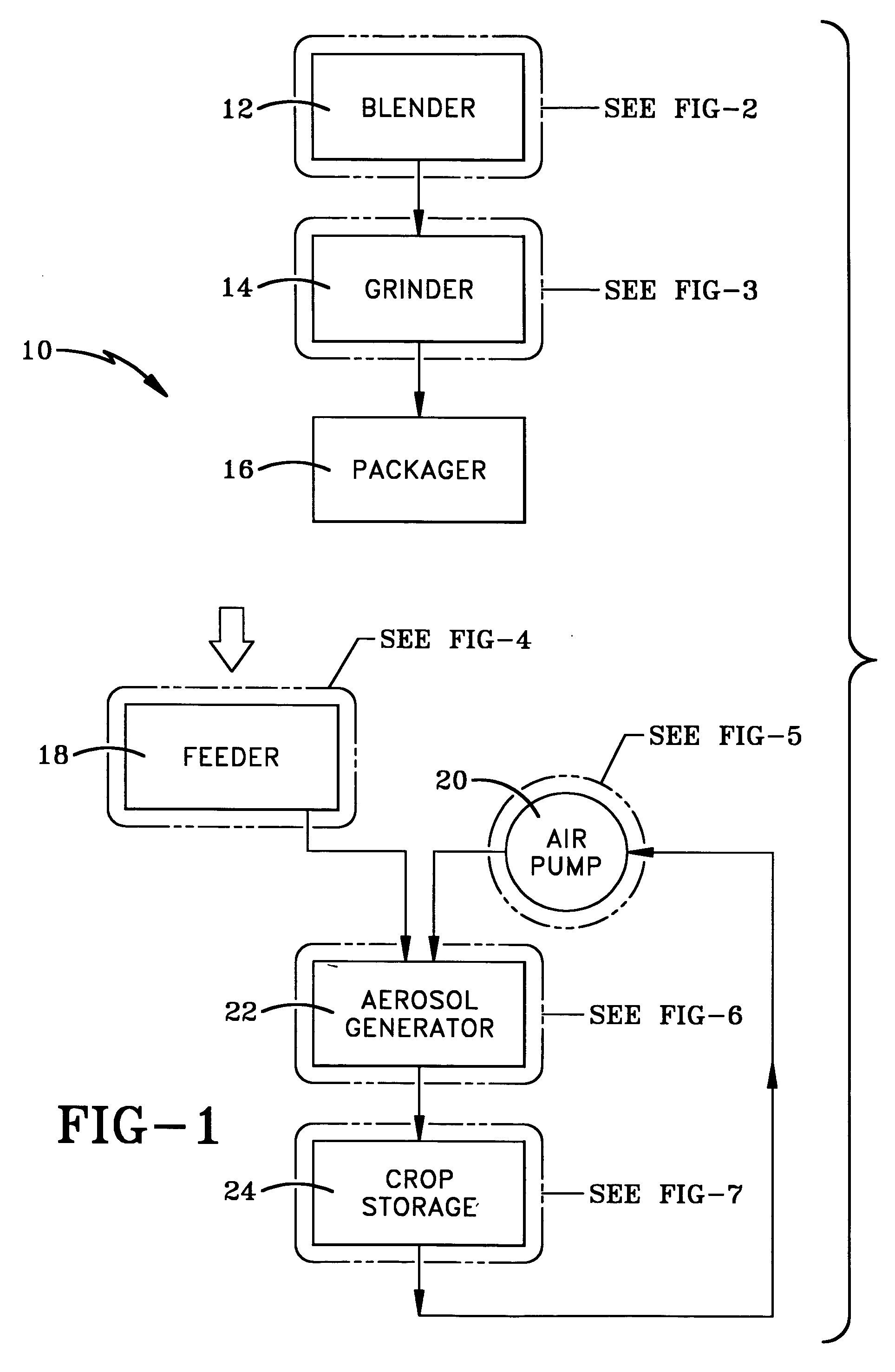Compositions for use in stored crop treatment aerosols and method and apparatus for application to stored crops
a technology for aerosols and stored crops, applied in the field of aerosols, can solve the problems of unsuitable for the formation of stored crop treatment aerosols, unsuitable for storage crop treatment aerosols, and large particle size, and achieve the effects of not being desirable in a stored crop treatment aerosol, and being relatively large particle siz
- Summary
- Abstract
- Description
- Claims
- Application Information
AI Technical Summary
Problems solved by technology
Method used
Image
Examples
Embodiment Construction
[0034] The system or apparatus of the present invention is indicated generally at 10 in FIG. 1. Apparatus 10 includes a blender 12, a grinder 14, a packager 16, a feeder 18, a blower in the form of an air pump 20, an aerosol generator 22 and a crop storage facility 24. In general, blender 12 and grinder 14 are used to form a composition 60 (FIG. 3) which will be used in an aerosol form for application thereof to stored crops to treat them for any desired purpose. Packager 16 then packages the composition so that it is ready for delivery and use in the production of a stored crop treatment aerosol 116 (FIGS. 6-7). Feeder 18, pump 20 and aerosol generator 22 are used to produce stored crop treatment aerosol 116 comprising composition 60 produced by blender 12 and grinder 14 for delivery to crop storage facility 24 in order to treat crops stored therein.
[0035] With reference to FIG. 2, one type of blender 12 is shown in greater detail. Blender 12 is also known as a tumbler and is used...
PUM
 Login to View More
Login to View More Abstract
Description
Claims
Application Information
 Login to View More
Login to View More - R&D
- Intellectual Property
- Life Sciences
- Materials
- Tech Scout
- Unparalleled Data Quality
- Higher Quality Content
- 60% Fewer Hallucinations
Browse by: Latest US Patents, China's latest patents, Technical Efficacy Thesaurus, Application Domain, Technology Topic, Popular Technical Reports.
© 2025 PatSnap. All rights reserved.Legal|Privacy policy|Modern Slavery Act Transparency Statement|Sitemap|About US| Contact US: help@patsnap.com



